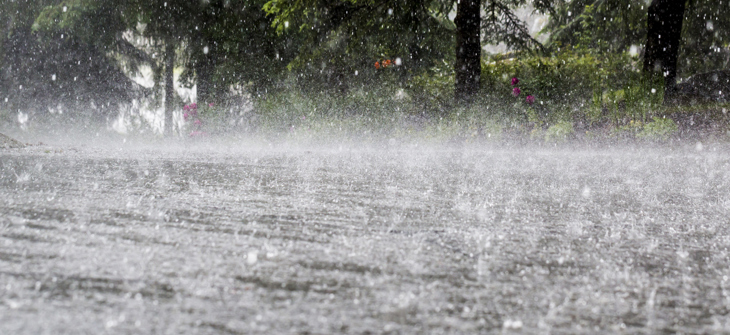
The Vital Role of Design Storms in Civil Engineering and Stormwater Management
How Design Storms Influence Civil Engineering and Stormwater Planning
In civil engineering and stormwater management, a design storm refers to a specific rainfall event defined and described by the statistical likelihood of the event occurring in a given rainfall year. Design storms are used as a standard for designing and evaluating stormwater infrastructure. For example, local stormwater standards commonly call out the 1, 2, 5, 10, 50, and 100-year storm events and the water quality storm event for a given geography, each of which plays a role in the design and implementation of stormwater infrastructure. Design storms are determined through statistical analysis of historical rainfall data, then used for hydrological modeling of the most critical design scenarios for stormwater infrastructure, including flood control and water quality applications.
For example, the term "10-year design storm" represents a rainfall event with a 10% probability of being equaled or exceeded in any given year. In other words, a 10-year design storm has an expected return period of 10 years, indicating that, on average, such a storm is expected to occur once in a decade.
Appropriate local design storms are essential to the following:
1. Infrastructure Design: Stormwater management infrastructure, including drainage pipes, manholes, culverts, detention systems, and numerous other stormwater control measures (SCMs), are designed to convey and capture the runoff generated during specific design storms. By using a standardized design storm, engineers can ensure that these systems are appropriately sized for local conditions and can manage stormwater without causing flooding or erosion.
2. Urban Planning: Design storms are fundamental in broader urban planning to assess the impact of new developments on the existing drainage system. Urban areas with increased impervious surfaces alter natural drainage patterns, making it essential to evaluate how these changes might impact downstream properties and receiving waters to implement appropriate infrastructure to mitigate the risk of adverse impacts.
3. Flood Risk Assessment: Design storms help engineers and authorities assess and mitigate flood risks created by development projects. Authorities can mitigate downstream flooding risks by analyzing how development alters existing conditions and deploying stormwater infrastructure to manage increased runoff volume and peak rates.
4. Water Quality Compliance: Besides flood control standards, many jurisdictions have regulations specifying the water quality design storm that must be managed and treated with SCMs. A common water quality design storm standard is the treatment of the 90th percentile storm event, which is commonly between 0.9 and 1.5 inches of rainfall depending on location. Statistical analysis reveals that designing stormwater quality infrastructure to manage this event results in treating ~90% of the runoff in a given rain year and that designing for larger storm events offers diminishing returns for the investment in larger infrastructure.
However, it is important to note that specific water quality design storm criteria can vary from state to state and even within regions of a state. Engineers and local authorities use historical rainfall data and analysis to determine appropriate design storm parameters for stormwater management systems based on the area's local conditions and regulatory requirements. Therefore, there is no one-size-fits-all answer to the "average" design storm in the U.S.
A growing concern for many jurisdictions is that design storms are based on historical rainfall data. Still, rainfall patterns and intensities are changing in many regions, thus calling into question the utility of historical rainfall data for designing infrastructure intended to manage future storm events. Climate change has significant implications for design storms in civil engineering due to the increased frequency and intensity of extreme weather events and our overall uncertainty of the magnitude of these expected impacts. As such, many urban drainage systems may be undersized relative to future storm events and prone to flooding. This is driving many municipalities and regulatory bodies to reevaluate their traditional design storm assumptions, possibly leading to costly infrastructure upgrades.
We are curious: what design storm parameters are being utilized in your area? How is your community dealing with the potential of changing weather patterns impacting drainage and infrastructure?" Leave your comments below.
